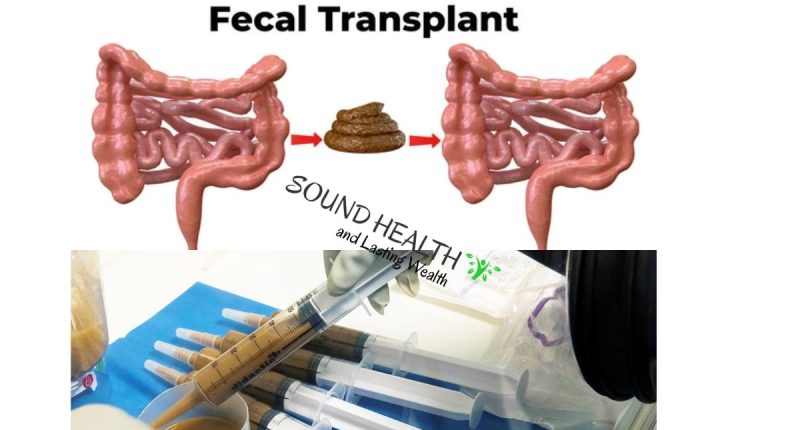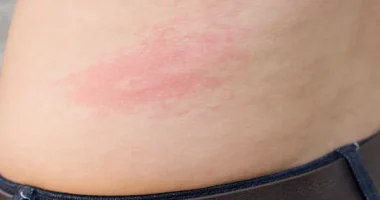Fecal microbiota transplantation (FMT), also known as stool transplant, is a medical procedure that involves the transfer of fecal material from a healthy donor to a recipient with a gastrointestinal disorder. The goal of FMT is to restore a healthy balance of bacteria in the recipient’s gut microbiome, which can help alleviate symptoms and improve overall health.
Definition and Purpose of Fecal Transplant
The gut microbiome, also known as the gut microbiota, is a community of trillions of microorganisms that reside in the intestines. These microbes play a crucial role in various bodily functions, including digestion, nutrient absorption, immune system regulation, and overall health. When the gut microbiome becomes imbalanced, it can lead to various gastrointestinal disorders, including recurrent Clostridium difficile (C. diff) infection, inflammatory bowel disease (IBD), and other conditions.
FMT aims to restore a healthy gut microbiome by introducing beneficial bacteria from a healthy donor. The donor’s stool, which contains a diverse and healthy population of microbes, is processed and administered to the recipient via various methods, such as colonoscopy, enema, or nasogastric tube. Once the donor’s microbes are introduced, they can colonize the recipient’s gut and help restore a healthy balance of bacteria.
History and Development of Fecal Transplant
The concept of FMT has been around for centuries, with documented instances dating back to ancient China. However, it wasn’t until the 20th century that FMT began to gain scientific recognition and acceptance. In the 1950s, German physician Dr. Benno Eiseman successfully treated a patient with pseudomembranous colitis, a severe form of C. diff infection, using FMT.
Since then, FMT has undergone significant research and development, leading to its growing acceptance as a therapeutic option for various gastrointestinal disorders. In 2013, the United States Food and Drug Administration (FDA) approved FMT for the treatment of recurrent C. diff infection.
Don’t Miss: Does fecal transplant work for weight loss?
Types of Fecal Transplant Procedures
Fecal transplant procedures can be categorized based on the method of stool administration:
-
Colonoscopy-Assisted FMT: This method involves administering the donor stool directly into the recipient’s colon using a colonoscope, a thin, flexible tube with a camera at the end. Colonoscopy-assisted FMT is considered the most precise method, as it allows for targeted delivery of the stool to the lower part of the intestinal tract, where the majority of the gut microbiome resides.
-
Nasogastric Tube FMT: This method involves administering the donor stool through a nasogastric tube, a thin tube that passes through the nose and into the stomach. From there, the stool travels through the small intestine and into the colon. Nasogastric tube FMT is a less invasive option compared to colonoscopy-assisted FMT but may be less precise in stool placement.
-
Sigmoidoscopy-Assisted FMT: This method involves administering the donor stool into the sigmoid colon, the lower part of the colon, using a sigmoidoscope, a shorter version of a colonoscope. Sigmoidoscopy-assisted FMT is a less invasive alternative to colonoscopy-assisted FMT and offers more precise stool placement than nasogastric tube FMT.
-
Enema FMT: This method involves administering the donor stool through an enema into the rectum, the last section of the large intestine. Enema FMT is often used for children or individuals who are unable to tolerate other methods.
The choice of FMT method depends on various factors, including the patient’s condition, preferences, and overall health status. The healthcare provider will carefully assess each patient’s needs and select the most appropriate method.
Medical Applications of Fecal Transplant
While the use of fecal transplant has been documented for centuries, its modern medical application gained recognition in the 1950s with the successful treatment of pseudomembranous colitis, a severe form of antibiotic-induced diarrhea. Today, fecal transplant is considered a highly effective treatment for recurrent Clostridium difficile (C. Diff) infection, a type of intestinal infection caused by the bacterium C. difficile.
FMT is also being investigated as a potential treatment for other gastrointestinal conditions, including:
- Inflammatory bowel disease (IBD), such as ulcerative colitis and Crohn’s disease
- Irritable bowel syndrome (IBS)
- Antibiotic-associated diarrhea
- Recurrent pouchitis
- Graft-versus-host disease (GvHD)
Fecal Transplant Procedure and Preparation
The Fecal Microbiota Transplantation (FMT) procedure is a carefully orchestrated process that involves several steps to ensure safety and efficacy. These steps include:
-
Donor Selection and Screening: The journey begins with meticulous donor selection. Potential donors undergo a rigorous screening process to ensure they meet stringent criteria, including age, general health, lifestyle factors, family medical history, and psychological well-being. This extensive screening helps minimize the risk of transmitting infections to the recipient and ensures the donor’s stool contains a healthy and diverse microbiome.
-
Donor Stool Preparation: Once a suitable donor is identified, their stool is carefully collected and processed. This involves blending the stool into a liquid suspension, homogenizing it to ensure consistency, and passing it through filters to remove any undigested food particles or debris. The resulting liquid suspension is then screened for potential pathogens or harmful substances.
-
Recipient Preparation: Before the FMT procedure, the recipient’s gastrointestinal tract is prepared to optimize the conditions for engraftment of the donor microbiome. This may involve dietary restrictions, laxatives, or enemas to clear the intestines and provide a clean slate for the incoming bacteria.
-
FMT Administration: The FMT procedure itself is a minimally invasive process that can be performed in various settings, including outpatient clinics, endoscopy suites, or even the recipient’s home. The method of FMT administration depends on the recipient’s condition and preferences. Common methods include:
-
Colonoscopy: The donor stool is infused directly into the recipient’s colon via a colonoscope, a thin, flexible tube with a camera at the end. This method allows for targeted delivery of the stool to the lower part of the intestinal tract, where the majority of the gut microbiome resides.
-
Nasogastric Tube: The donor stool is administered through a nasogastric tube, a thin tube that passes through the nose and into the stomach. From there, the stool travels through the small intestine and into the colon.
-
Sigmoidoscopy: The donor stool is infused into the sigmoid colon, the lower part of the colon, using a sigmoidoscope, a shorter version of a colonoscope.
-
Enema: The donor stool is administered through an enema into the rectum, the last section of the large intestine. This method is often used for children or individuals who are unable to tolerate other methods.
-
-
Post-Procedure Care and Monitoring: Following the FMT procedure, recipients are closely monitored for any potential side effects, such as bloating, gas, or diarrhea. These temporary discomforts are typically mild and resolve within a few days. Recipients are also provided with detailed post-procedure instructions, which may include dietary recommendations, antibiotic avoidance, and follow-up appointments to assess the effectiveness of the FMT.
Ensuring Donor Safety and Health – Donor safety is paramount in FMT. Rigorous screening procedures help minimize the risk of transmitting infections to the recipient. Additionally, donors are counseled about potential risks and are closely monitored throughout the screening process.
Related: DIY Faecal Transplants Side Effect Is Dangerous: Experts Warn and Give Reasons
Effectiveness and Success Rates of Fecal Transplant
FMT has demonstrated high success rates in treating recurrent Clostridium difficile (C. Diff) infections, with up to 90% of patients achieving resolution after one or two treatments. For other gastrointestinal conditions, research is still ongoing, but FMT has shown promising results in managing symptoms of ulcerative colitis, Crohn’s disease the two forms of IBD, and irritable bowel syndrome (IBS).
Therapeutic Applications of Fecal Transplant
Fecal transplant has emerged as a valuable therapeutic option for a range of GI disorders, particularly those associated with a disrupted gut microbiome. Its primary applications include:
-
Treatment of Clostridium difficile (C. Diff) Infection: FMT has revolutionized the treatment of recurrent C. diff infection, a serious condition caused by the bacterium Clostridium difficile. When antibiotics fail to eradicate C. diff, FMT offers a highly effective alternative, with success rates of up to 90%.
-
Management of Inflammatory Bowel Disease (IBD): FMT has shown promise in managing ulcerative colitis and Crohn’s disease, two chronic inflammatory conditions of the digestive tract. While more research is needed, FMT has emerged as a potential therapeutic option for IBD patients who do not respond adequately to conventional medications.
-
Potential Benefits for Other Gastrointestinal Conditions: FMT is being investigated for its potential benefits in managing a variety of other GI conditions, including irritable bowel syndrome (IBS), antibiotic-associated diarrhea, and certain metabolic disorders. While research is still ongoing, FMT holds promise for expanding the treatment options for these conditions.
Benefits of Fecal Transplant
FMT is a promising treatment option for various gastrointestinal conditions, particularly those associated with disruptions in the gut microbiome. The gut microbiome is the vast community of microorganisms that reside in the intestines and plays a crucial role in maintaining digestive health and overall well-being.
By introducing a healthy microbiome from a donor, FMT can help restore the balance of gut bacteria, alleviating symptoms and improving the overall health of the recipient.
Considerations and Risks of Fecal Transplant
While FMT is generally considered safe, there are some potential risks and side effects associated with the procedure, such as:
-
Gastrointestinal discomfort: Some recipients may experience temporary bloating, gas, or abdominal cramps.
-
Nausea and vomiting: These symptoms are typically mild and self-limiting.
-
Low-grade fever: A slight rise in body temperature is occasionally observed.
-
Infection: There is a minimal risk of transmitting infectious diseases through FMT, as donors undergo rigorous screening procedures.
Future Directions of Fecal Transplant
FMT is a rapidly evolving field of medicine with promising potential for treating various gastrointestinal conditions. Ongoing research aims to:
-
Expand the indications for FMT to include a wider range of gastrointestinal disorders.
-
Optimize fecal transplant techniques and procedures to enhance efficacy and minimize potential risks.
-
Advance understanding of the gut microbiome and its role in various health conditions to better tailor FMT treatment strategies.
Post-Procedure Care and Instructions
Recipients may experience temporary side effects after FMT, such as bloating, gas, or diarrhea. These typically resolve within a few days. Recipients are advised to follow post-procedure instructions, which may include dietary recommendations and monitoring
Resources:
-
Bakken, L. J., Borody, T., Brandt, L. J., Harty, P. J., Ilson, D. T., Kelly, C. P., … & Surawicz, C. M. (2016). Fecal microbiota transplantation for Clostridium difficile infection: What is the evidence? Clinical Infectious Diseases, 62(Supplement 2), S101-S108.
-
DeWilde, J., Cani, P. D., & Holvoet, T. (2022). Fecal microbiota transplantation: Current status and perspectives. Current Opinion in Gastroenterology, 38(3), 341-351.
-
Khanna, S., & Bakken, L. J. (2022). Fecal microbiota transplantation: A review of its use in the treatment of gastrointestinal diseases. Gastroenterology & Hepatology, 17(3), 176-184.
-
Kelly, C. P., Allegretti, J. R., Brandt, L. J., Hanau, L. H., Keswani, A., Khoruts, A., … & Surawicz, C. M. (2014). Fecal microbiota transplantation for treatment of Clostridium difficile infection: Just the beginning. Clinical Infectious Diseases, 58(Supplement 2), S107-S113.
-
Lumpkin, E. A., & Singh, A. (2022). Fecal microbiota transplantation: A review of current practice and future directions. Journal of Clinical Gastroenterology, 56(7), 651-665.
-
McFarland, L. V. (2022). Fecal microbiota transplantation: From bench to bedside.[Review]. Microorganisms, 10(10), 2355.
-
Quigley, E. M. M., Pimentel, M., Aguilera, M., Jairath, A., Klitgaard, K., Justesen, T. S., … & Allegretti, J. R. (2022). Fecal microbiota transplantation for treatment of recurrent Clostridium difficile infection: A systematic review and meta-analysis. Clinical Infectious Diseases, 75(9), 1689-1701.
-
Shetty, A. P., Sampson, T. R., & Pimentel, M. (2022). Fecal microbiota transplantation: An update on its role in the treatment of inflammatory bowel disease. Current Treatment Options in Gastroenterology, 21(2), 1-17.
-
Suez, J., Zhernakova, A., Elinav, E., & Segal, E. (2018). Phecal microbiota transplantation for inflammatory bowel disease: A review of the evidence. Gut, 67(7), 1166-1179.
-
Van Nood, E., Vrieze, A., De Vos, W. M., & Weizmann, Z. (2013). Duodenal transplantation of fecal microbiota for recurrent Clostridium difficile–associated diarrhea: A proof-of-concept study. The Lancet, 381(9872), 1605-1610.








